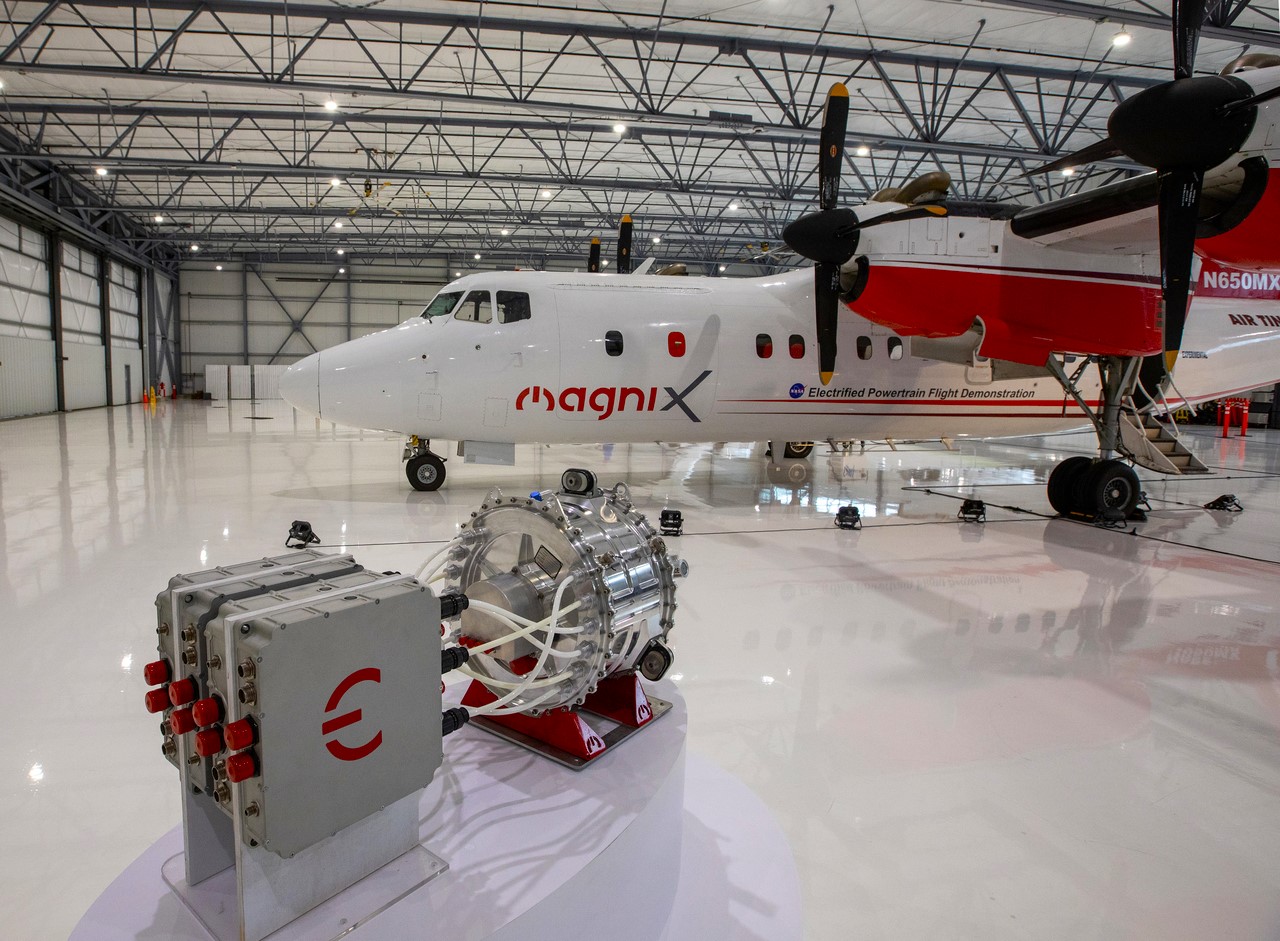


NASA and magniX unveiled the de Havilland Canada DHC-7-103 turboprop aircraft (N650MX) which will be further modified into a hybrid electric research testbed with the retrofit of Magni650 electric propulsion units, under NASA’s Electrified Powertrain Flight Demonstration (EPFD) project.
On display with its new livery for the first time at King County International Airport (Boeing Field), the 1979 built aircraft, purchased by Air Tindi in 2021, is originally powered by P&W Canada PT6A-50 engines.
EPFD is a collaboration between NASA and industry (GE Aerospace and magniX) to demonstrate the capabilities of electrified aircraft propulsion technologies in reducing emissions for future commercial aircraft in mid-2030s.
Related article....
NASA awarded magniX a US$ 74.3m contract in 2021 as a partner for the EPFD, which is aimed at accelerating the Entry into Service of electric aviation.
As per magniX, the unveiling is the latest development in the program that has achieved substantial milestones in 2024:
Under EPFD, GE Aerospace is also developing a megawatt-class hybrid electric powertrain for ground and flight tests in the middle of this decade. Boeing and its subsidiary Aurora Flight Sciences are partnering with GE Aerospace to support the flight tests using a modified Saab 340B aircraft.
The project’s goal is to accelerate the transition of hybrid propulsion systems with megawatt (MW) levels of power to short-haul turboprop aircraft carrying 30-70 passengers and regional single-aisle commercial airliners carrying up to 180 passengers.
As part of this demonstration, magniX will modify the Dash 7 with a new hybrid electric system to conduct ground and flight tests. NASA will use data gathered from these tests to identify and minimize barriers in certifying these new technologies and help inform new standards and regulations for future electrified aircraft.
Robert A. Pearce, associate administrator for NASA’s Aeronautics Research Mission Directorate, said :
“We are a research organization that continues to advance aviation, solve the problems of flight, and lead the community into the future,” “Through our EPFD project, we’re taking big steps in partnership to make sure electric aviation is part of the future of commercial flight.”
With the aircraft livery complete, magniX will begin the process of converting the Dash 7 into a research testbed with a hybrid electric propulsion system. Flight tests with the new system are planned for 2026.
Reed Macdonald, CEO of magniX, said :
“As EPFD makes outstanding progress, magniX and NASA are proving the feasibility of electric propulsion for commercial flight,” “Integrating our game-changing electric powertrains into a regional airliner such as the Dash 7 represents a major step forward in bringing electric solutions into the business of aviation.”
Through EPFD, NASA collaborates with U.S. industry to conduct ground and flight tests of existing aircraft testbeds retrofitted with electrified aircraft propulsion (EAP) technologies.
EAP technologies have the potential to improve fuel efficiency and reduce harmful emissions from flight. NASA is targeting at least two flight demonstrations within the next five years to help introduce EAP systems to the U.S. commercial fleet within the 2030-2035 timeframe.
Display Picture : NASA/David C. Bowman
You may like to read.....
